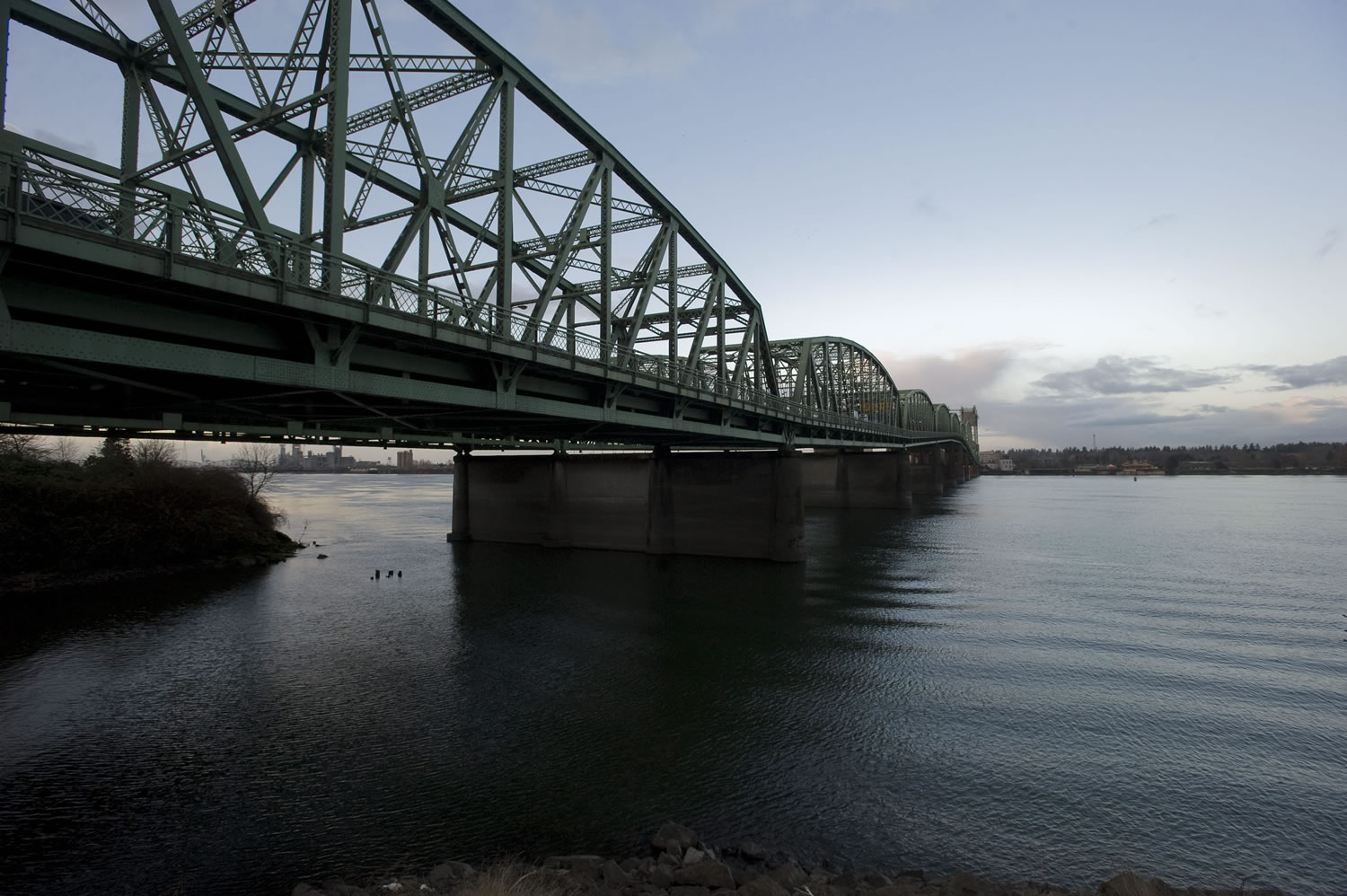As Washington phases out its involvement in the Columbia River Crossing, the project’s remaining director said last week he still considers it a bistate effort.
Kris Strickler, the Oregon director of the CRC, refuted the notion that staff now working in the project office are attempting to bypass rejection by the Washington Legislature, which adjourned in June without authorizing any funding for the project. Any pared-down CRC that replaces the Interstate 5 Bridge and extends light rail to Vancouver would still require intergovernmental agreements and some form of partnership to happen, he said.
“That doesn’t mean that Oregon can come through and initiate a project on their own,” Strickler said of Washington’s funding decision.
But as supporters hold out hope for a revived CRC with Oregon at the helm, the many unanswered questions surrounding the original project haven’t gone away. In fact, they’ve grown more complicated in some ways. Even Strickler acknowledged that trying to salvage the CRC in some form — a possibility both states’ governors have said they’ll at least consider — is a big if.
“There’s still a lot of hurdles in front of us that we have to address and answer questions about,” Strickler said. “It’s not a done deal.”
The CRC was declared dead after lawmakers in Olympia adjourned more than a month ago. Now, the project remains in a bizarre state of limbo as supporters scramble in a last-ditch effort to save it.
Officials began shutting down the CRC on July 1. Stop-work orders were sent to project partners and consultants. About three-quarters of the staff in the CRC’s downtown Vancouver office have since packed up and moved out. That includes Nancy Boyd, once the CRC co-director.
The Oregon Department of Transportation continued some CRC-related work it said could have future use south of the Columbia River, at the direction of Oregon Gov. John Kitzhaber. Strickler said he believes work on a phased CRC led by Oregon falls within that scope.
Such a proposal would still replace the I-5 Bridge with a new span that includes light rail. It would still rebuild freeway interchanges in Oregon, and the state Highway 14 interchange in Washington. Any additional freeway work in Washington would wait until state lawmakers put up funding.
Under that concept, Oregon would collect tolls on the bridge, and take on all of the state debt required to build the project, Strickler said. The phased version would reduce the overall cost from $3.4 billion to $2.75 billion — $1.2 billion for the new bridge and landings, $850 million for light rail, $450 million for Oregon freeway improvements, $140 million for the Highway 14 work, and $110 million for interim borrowing and project development costs.
The finance plan still includes one crucial hole: the estimated $2.5 million annual net cost to operate light rail in Vancouver. Federal officials have said that money must be lined up by October before they’ll consider handing out the $850 million to build light rail.
Local funding for light rail now appears more uncertain than ever. C-Tran, the agency that had been tasked with coming up with that money, was told by the CRC to stop working on the project in July. The agency has no plans to pick up the issue again unless directed otherwise, said C-Tran public affairs manager Jim Quintana.
“We’re just sort of waiting to see what shakes out,” he said.
Strickler declined to say what other options for local light rail financing might be possible. At this point, Quintana said, it’s not coming from C-Tran.
Another big question mark is whether the U.S. Coast Guard will grant a needed bridge permit to the CRC — and how the project will compensate upriver businesses affected by its proposed 116-foot height. Despite the shutdown, CRC leaders did not withdraw pending permit applications to the Coast Guard and other agencies.
The CRC inked mitigation deals with two major manufacturers earlier this year. A third, Thompson Metal Fab, has not reached a resolution wih the CRC. The CRC has also held mitigation talks with JT Marine, a Vancouver-based marine contractor. As things stand now, it’s assumed any compensation would be paid without money from Washington, Strickler said.
Those negotiations are ongoing, Strickler said. But in Thompson’s case, they only restarted recently. Company spokesman Tom Hunt said Thompson Metal Fab was only contacted by one of the states within the last week, after not hearing anything for two months. The Coast Guard is expected to make its decision on the bridge permit by Sept. 30.
Another looming deadline will kill Oregon’s state funding commitment to the project if its legislature fails to take further action. Oregon authorized its share on the condition that Washington do the same by Sept. 30, among other stipulations. Assuming that won’t happen, lawmakers in Salem will have to rewrite their funding bill to keep the money intact. Whether they have the appetite to do so remains to be seen.
Meanwhile, both states’ governors have asked for a review of the feasibility of a CRC that puts Oregon in the driver’s seat alone. For Washington, that review continues, said Washington State Department of Transportation spokesman Lars Erickson.
WSDOT officials have not yet set a date to brief Gov. Jay Inslee on the topic, Erickson said.
Eric Florip: 360-735-4541; http://twitter.com/col_enviro; eric.florip@columbian.com




